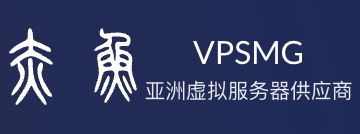pyton 的while循环
只要在一个条件为真的情况下,while语句允许你重复执行一块语句。while语句是所谓 循环 语句的一个例子。while语句有一个可选的else从句。#!/usr/bin/python
# Filename: while.py
number = 23
running = True
while running:
guess = int(raw_input('Enter an integer : '))
if guess == number:
print 'Congratulations, you guessed it.'
running = False # this causes the while loop to stop
elif guess < number:
print 'No, it is a little higher than that'
else:
print 'No, it is a little lower than that'
else:
print 'The while loop is over.'
# Do anything else you want to do here
print 'Done' 输出$ python while.py
Enter an integer : 50
No, it is a little lower than that.
Enter an integer : 22
No, it is a little higher than that.
Enter an integer : 23
Congratulations, you guessed it.
The while loop is over.
Done 它如何工作
在这个程序中,我们仍然使用了猜数游戏作为例子,但是这个例子的优势在于用户可以不断的猜数,直到他猜对为止——这样就不需要像前面那个例子那样为每次猜测重复执行一遍程序。这个例子恰当地说明了while语句的使用。
我们把raw_input和if语句移到了while循环内,并且在while循环开始前把running变量设置为True。首先,我们检验变量running是否为True,然后执行后面的 while-块 。在执行了这块程序之后,再次检验条件,在这个例子中,条件是running变量。如果它是真的,我们再次执行while-块,否则,我们继续执行可选的else-块,并接着执行下一个语句。
当while循环条件变为False的时候,else块才被执行——这甚至也可能是在条件第一次被检验的时候。如果while循环有一个else从句,它将始终被执行,除非你的while循环将永远循环下去不会结束!
True和False被称为布尔类型。你可以分别把它们等效地理解为值1和0。在检验重要条件的时候,布尔类型十分重要,它们并不是真实的值1。
else块事实上是多余的,因为你可以把其中的语句放在同一块(与while相同)中,跟在while语句之后,这样可以取得相同的效果。
下一篇 pyton的for循环
# Filename: while.py
number = 23
running = True
while running:
guess = int(raw_input('Enter an integer : '))
if guess == number:
print 'Congratulations, you guessed it.'
running = False # this causes the while loop to stop
elif guess < number:
print 'No, it is a little higher than that'
else:
print 'No, it is a little lower than that'
else:
print 'The while loop is over.'
# Do anything else you want to do here
print 'Done'
Enter an integer : 50
No, it is a little lower than that.
Enter an integer : 22
No, it is a little higher than that.
Enter an integer : 23
Congratulations, you guessed it.
The while loop is over.
Done
在这个程序中,我们仍然使用了猜数游戏作为例子,但是这个例子的优势在于用户可以不断的猜数,直到他猜对为止——这样就不需要像前面那个例子那样为每次猜测重复执行一遍程序。这个例子恰当地说明了while语句的使用。
我们把raw_input和if语句移到了while循环内,并且在while循环开始前把running变量设置为True。首先,我们检验变量running是否为True,然后执行后面的 while-块 。在执行了这块程序之后,再次检验条件,在这个例子中,条件是running变量。如果它是真的,我们再次执行while-块,否则,我们继续执行可选的else-块,并接着执行下一个语句。
当while循环条件变为False的时候,else块才被执行——这甚至也可能是在条件第一次被检验的时候。如果while循环有一个else从句,它将始终被执行,除非你的while循环将永远循环下去不会结束!
True和False被称为布尔类型。你可以分别把它们等效地理解为值1和0。在检验重要条件的时候,布尔类型十分重要,它们并不是真实的值1。
else块事实上是多余的,因为你可以把其中的语句放在同一块(与while相同)中,跟在while语句之后,这样可以取得相同的效果。
下一篇 pyton的for循环
none





